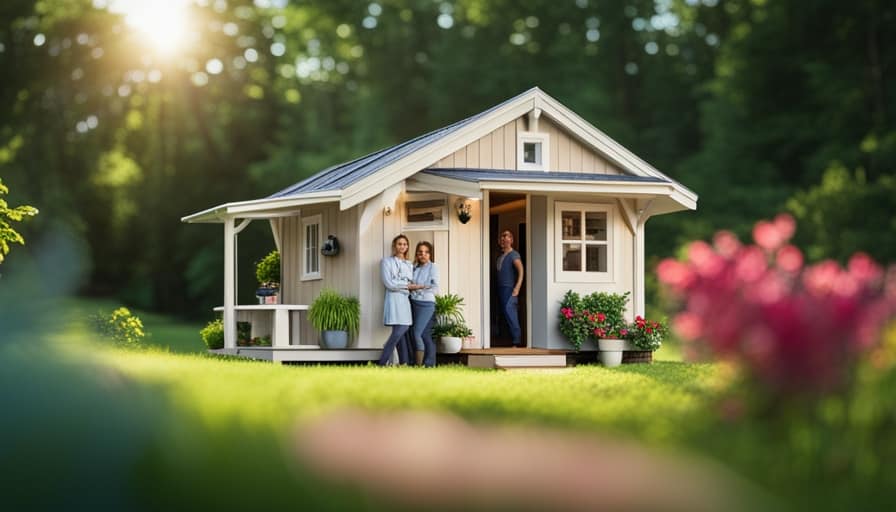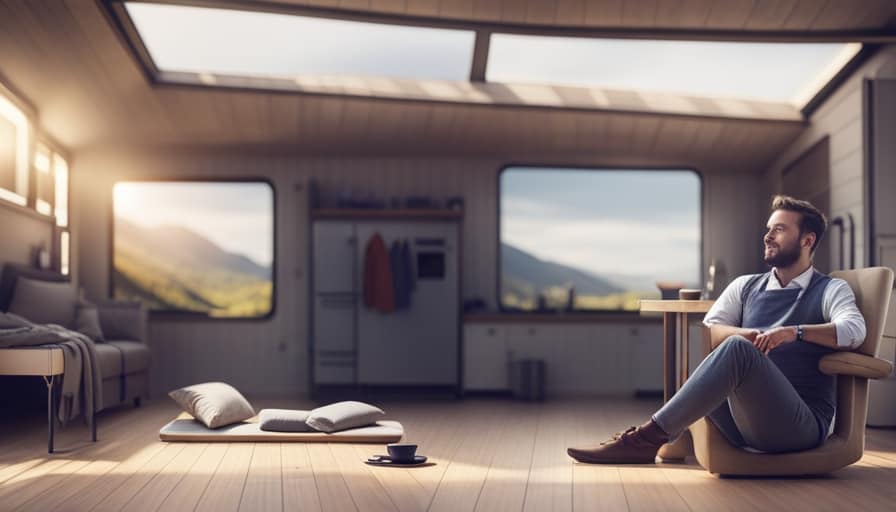Did you know that living in a tiny house can bring us financial freedom, a minimalist lifestyle, and a lower environmental impact? It’s true! With the efficient use of space, greater connection with nature, and opportunity for creative design, tiny houses offer a multitude of benefits.
Not to mention simplified cleaning and organizing, fostering a sense of community, and the ability to live a mobile and flexible lifestyle.
Join us as we explore the top 10 benefits of living in a tiny house.
Key Takeaways
- Increased financial freedom through downsizing living space and expenses
- Significantly reduce environmental impact and contribute to preserving the planet for future generations
- Freedom to travel and explore with easy mobility and transportability on trailers
- Maximize living areas in tiny houses with efficient use of space and promote simplicity and mindfulness in daily lives
Financial Freedom
We’ve found that one of the greatest advantages of living in a tiny house is the increased financial freedom it provides. Financial independence becomes more attainable when you downsize your living space and expenses. With lower mortgage or rent payments, reduced utility bills, and fewer possessions to maintain, you can allocate your resources towards more meaningful pursuits.
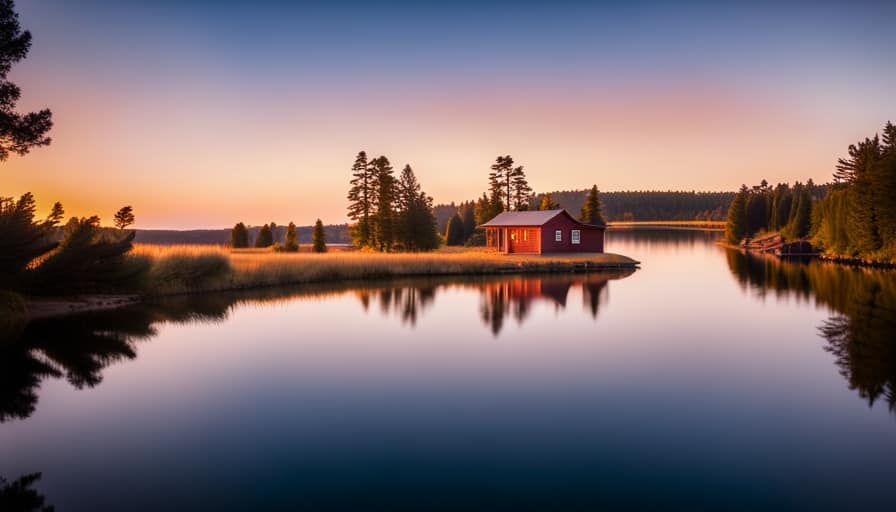
Budgeting strategies play a crucial role in maximizing your financial freedom. By carefully monitoring your spending, prioritizing essential needs, and minimizing wasteful expenses, you can save significantly and achieve long-term financial goals.
Living in a tiny house encourages a minimalist lifestyle, where you learn to appreciate the value of experiences rather than material possessions. This shift in mindset not only helps you become financially independent, but it also allows you to focus on serving others and making a positive impact in your community.
Minimalist Lifestyle
Living in a tiny house allows us to embrace a minimalist lifestyle, with fewer material possessions and a greater focus on experiences and personal fulfillment. This shift towards minimalism not only has sustainability benefits but also positively impacts our mental well-being.
By reducing the amount of stuff we own, we’re able to reduce our carbon footprint and minimize waste. Additionally, living in a small space encourages us to prioritize what truly matters in life, such as relationships, hobbies, and personal growth. This minimalist lifestyle promotes a sense of freedom and contentment, as we no longer feel burdened by the constant pursuit of material possessions.
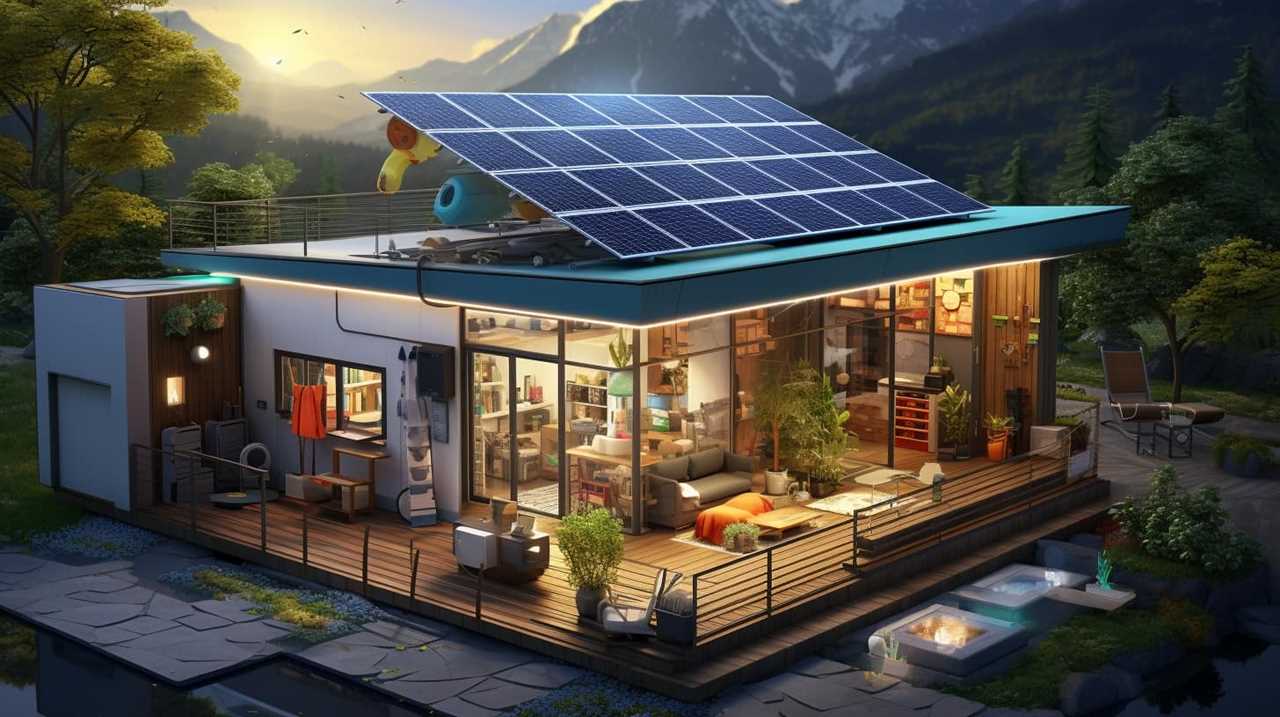
It allows us to live more intentionally, concentrating on the things that bring us joy and fulfillment. By adopting a minimalist mindset, we can create a more sustainable and fulfilling life for ourselves and the planet.
As we focus on living with less, we also contribute to a lower environmental impact, which we’ll discuss in the next section.
Lower Environmental Impact
One of the top benefits of living in a tiny house is that it significantly reduces our environmental impact. By embracing a minimalist lifestyle and opting for a smaller living space, we can lower our carbon footprint and contribute to sustainable living.
Living in a tiny house involves using fewer resources, such as energy and water, which leads to reduced waste and emissions. This environmentally conscious choice aligns with the desire to serve others by preserving the planet for future generations.
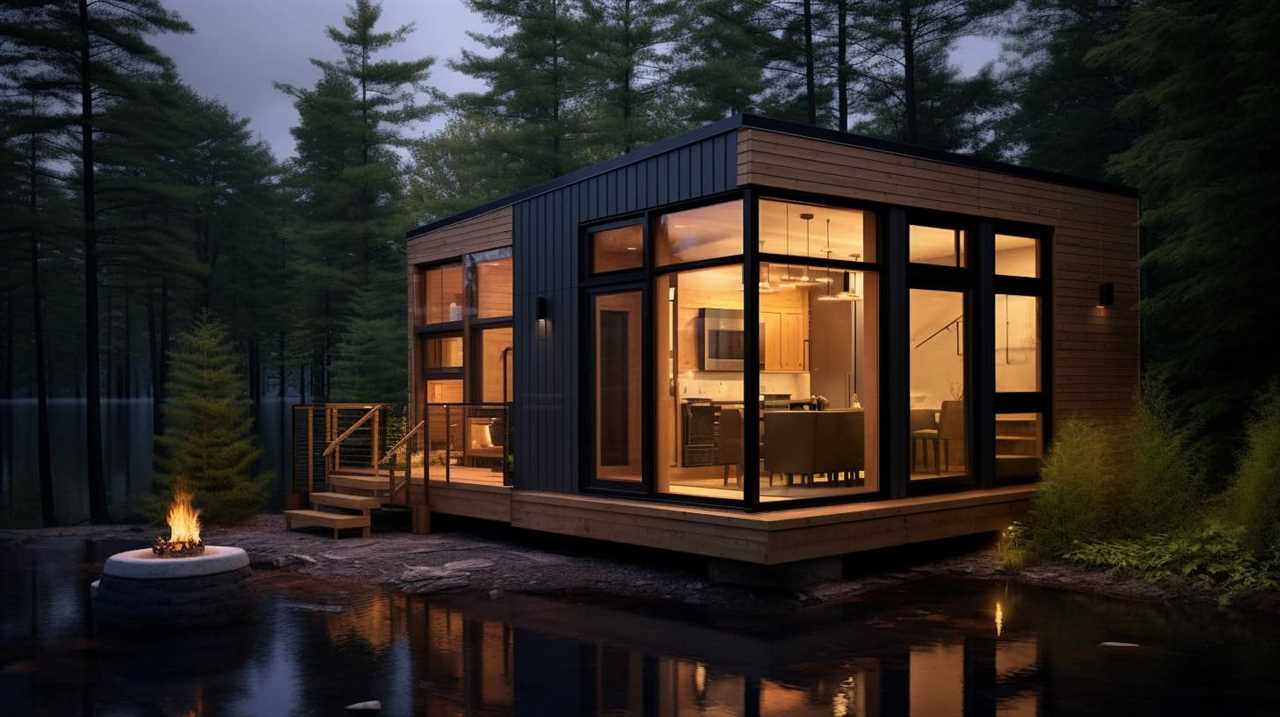
To illustrate the impact of living in a tiny house, consider the following comparison:
| Resource | Conventional Home | Tiny House |
|---|---|---|
| Energy consumption | High | Low |
| Water usage | Excessive | Minimal |
| Waste production | Significant | Minimal |
| Carbon emissions | High | Low |
Mobility and Flexibility
Choosing to live in a tiny house allows us the freedom to travel and explore, providing us with the mobility and flexibility to experience new adventures.
One of the key mobility advantages of living in a tiny house is that it’s much easier to move compared to a traditional home. Due to their compact size, tiny houses can be transported on trailers, allowing us to take our home with us wherever we go.
This flexibility opens up a world of possibilities, enabling us to live in different locations and experience a variety of environments. Whether we want to spend a few months by the beach or explore the mountains, a tiny house allows us to easily adapt and create flexible living arrangements that suit our ever-changing needs.

Efficient Use of Space
When it comes to living in a tiny house, one of the greatest benefits is the efficient use of space. We’re able to maximize our living areas, ensuring that every square inch is utilized to its fullest potential.
With creative storage solutions, we can find a place for everything we need, allowing us to maintain a clean and clutter-free environment. This minimalist lifestyle not only helps us stay organized, but it also promotes a sense of simplicity and mindfulness in our daily lives.
Maximized Living Areas
We can truly appreciate the maximized living areas in a tiny house, as they make efficient use of every inch of space. Living in a small space doesn’t mean sacrificing functionality or comfort.
In fact, tiny houses are designed to optimize every corner, ensuring that every area serves a purpose. From multifunctional furniture to clever storage solutions, tiny houses offer innovative ways to make the most of limited space.
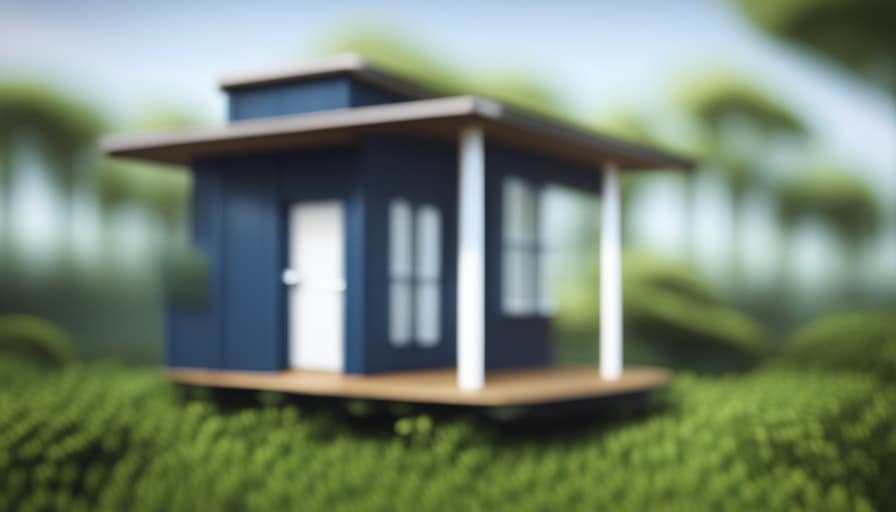
For example, a dining table can double as a work desk, and storage compartments can be built into stairs or under furniture. These creative design elements not only maximize functionality but also create a sense of spaciousness within the limited square footage.
Small space living in a tiny house truly showcases the power of thoughtful design and how it can serve our needs efficiently.
Creative Storage Solutions
Our tiny house offers innovative storage solutions, allowing us to efficiently utilize the limited space available. Creative storage solutions are essential in a tiny house, as every inch counts.
We’ve incorporated space-saving techniques to make the most of our living area. One example is using multi-purpose furniture, such as a bed with built-in drawers or a coffee table that doubles as a storage unit. We’ve also installed shelves and hooks on the walls to maximize vertical storage. Additionally, we utilize under-bed storage containers and have incorporated hidden storage compartments in our furniture.

These creative storage solutions not only keep our belongings organized but also help create a clutter-free living environment. With these space-saving techniques, our tiny house feels spacious and functional, making it a truly efficient and enjoyable living space.
Minimalist Lifestyle Advantages
Although living in a tiny house presents challenges, it allows us to embrace a minimalist lifestyle and effectively utilize the limited space available. By adopting a minimalist home decor, we can create a serene and clutter-free environment that promotes stress-free living. Here are four advantages of a minimalist lifestyle in a tiny house:
-
Efficient Use of Space: With limited square footage, every inch counts. By embracing minimalism, we can carefully choose what we need and eliminate unnecessary belongings, making the most of our space.
-
Simplified Cleaning and Maintenance: With fewer items to clean and maintain, we can spend less time on chores and more time enjoying our lives. A minimalist lifestyle allows us to focus on experiences rather than material possessions.

-
Financial Freedom: Living in a tiny house naturally reduces expenses, allowing us to save money and allocate resources towards experiences, travel, and personal growth.
-
Environmental Sustainability: By living with less, we reduce our carbon footprint and contribute to a more sustainable future. A minimalist lifestyle promotes conscious consumption and a reduced impact on the environment.
Embracing a minimalist lifestyle in a tiny house offers countless benefits, allowing us to live a more intentional, stress-free life while making a positive impact on our surroundings.
Lower Maintenance and Upkeep Costs
One of the benefits of living in a tiny house is that our maintenance and upkeep costs are significantly lower. With a smaller living space, there are fewer areas that require regular cleaning and maintenance. This not only saves us money but also allows us to spend less time on household chores and more time doing the things we love.

Financial savings are a major advantage of living in a tiny house as we’ve reduced utility bills, lower property taxes, and decreased insurance costs. Additionally, the compact nature of a tiny house means that repairs and renovations are less expensive. We can easily tackle any repairs ourselves or hire professionals for a fraction of the cost compared to larger homes.
In terms of time efficiency, the smaller space is quicker and easier to clean, freeing up more time for other activities. Living in a tiny house offers both financial savings and time efficiency, allowing us to live a simpler and more fulfilling life.
Greater Connection With Nature
Living in a tiny house allows us to be immersed in natural surroundings and enjoy a greater connection with nature. With less space to maintain, we can prioritize spending more time outdoors and engaging in outdoor activities.
Whether it’s hiking, biking, or simply enjoying the beauty of our surroundings, living in a tiny house enables us to fully embrace and appreciate the wonders of nature.
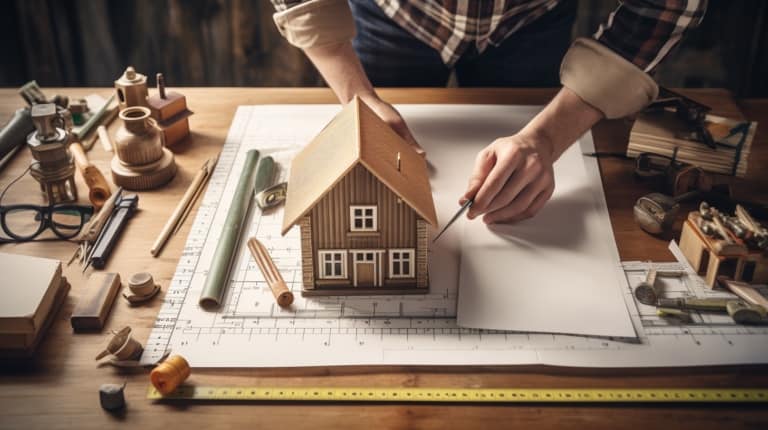
Immersed in Natural Surroundings
As we’re surrounded by the natural beauty, we can truly appreciate the benefits of living in a tiny house. One of the greatest advantages is the greater appreciation we develop for the environment and sustainable living. Here are four reasons why being immersed in natural surroundings in a tiny house is so rewarding:
-
Closer to nature: Living in a tiny house allows us to be in close proximity to nature every day. We wake up to the sound of birds chirping and fall asleep under a canopy of stars, fostering a deep connection with the natural world.
-
Reduced environmental impact: Tiny houses are designed to be environmentally friendly, emphasizing energy efficiency, sustainable materials, and minimal carbon footprint. By living in a tiny house, we contribute to a healthier planet.
-
Access to outdoor spaces: With limited indoor space, tiny house dwellers are encouraged to spend more time outdoors. This leads to increased physical activity, improved mental well-being, and a stronger bond with nature.
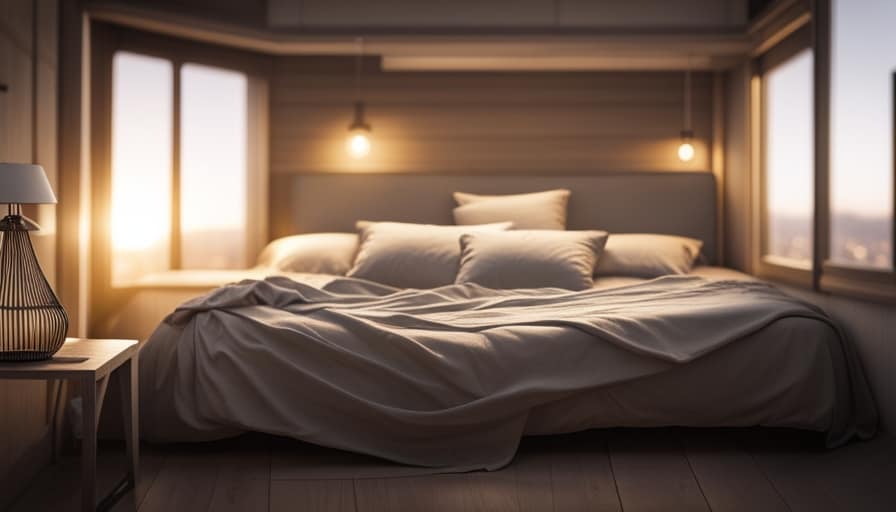
-
Living off the grid: Many tiny houses are equipped with eco-friendly systems for generating electricity and collecting rainwater. This self-sufficiency allows us to live in harmony with nature and reduces our reliance on traditional utilities.
Living in a tiny house not only provides a greater appreciation for the natural world but also fosters a sustainable lifestyle that benefits both ourselves and the environment.
As we explore the benefits of being immersed in nature, let’s now dive into the next exciting aspect of tiny house living: being close to outdoor activities.
Close to Outdoor Activities
We love living in a tiny house because we are close to outdoor activities, which allows us to have a greater connection with nature. The proximity to nature is one of the biggest benefits of living in a tiny house. We have easy access to outdoor recreation, such as hiking, biking, and kayaking. Being surrounded by nature not only provides us with a sense of tranquility and peace, but it also offers numerous health benefits. Spending time outdoors has been proven to reduce stress, boost mood, and improve overall well-being. It allows us to disconnect from the fast-paced world and appreciate the beauty of the natural surroundings. Take a look at the table below to see some of the activities we enjoy in our tiny house:

| Outdoor Activities | Benefits |
|---|---|
| Hiking | Physical fitness, stress relief, and improved cardiovascular health |
| Biking | Increased stamina, reduced carbon footprint, and exploration of new areas |
| Kayaking | Upper body strength, enhanced mental focus, and connection with water |
| Camping | Bonding with family and friends, disconnecting from technology, and building resilience |
| Gardening | Fresh produce, stress reduction, and connection with the earth |
Living in a tiny house has truly allowed us to immerse ourselves in the beauty of nature and enjoy all the wonderful outdoor activities that come with it.
Opportunity for Creative Design
While it may seem challenging at first, designing a tiny house allows us to unleash our creativity and explore innovative solutions for maximizing space. The opportunity for creative design in a tiny house is truly exciting, as it allows us to think outside the box and create unique and functional living spaces.
Here are four reasons why the opportunity for creative design in a tiny house is so beneficial:
-
Interior design: With limited space, we’re forced to carefully consider every aspect of interior design, resulting in a truly personalized and efficient living space.
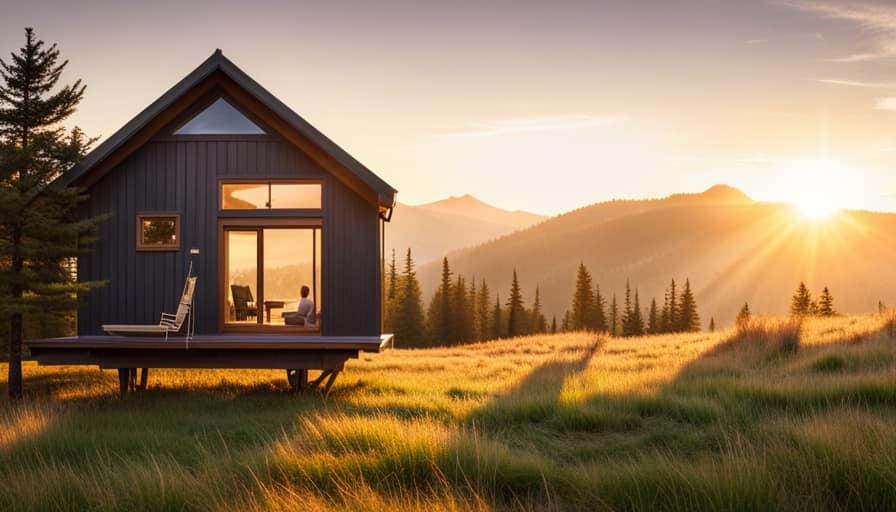
-
Architectural innovation: Tiny houses often require innovative architectural solutions to make the most of the limited space available, pushing the boundaries of design and functionality.
-
Customization: Designing a tiny house allows us to create a space that perfectly suits our needs and preferences, from layout to storage solutions.
-
Sustainability: Tiny houses promote sustainable living by encouraging the use of eco-friendly materials and reducing energy consumption.
Simplified Cleaning and Organizing
When it comes to cleaning and organizing in a tiny house, we can enjoy the benefits of efficient use of space, minimal clutter, and easy maintenance.
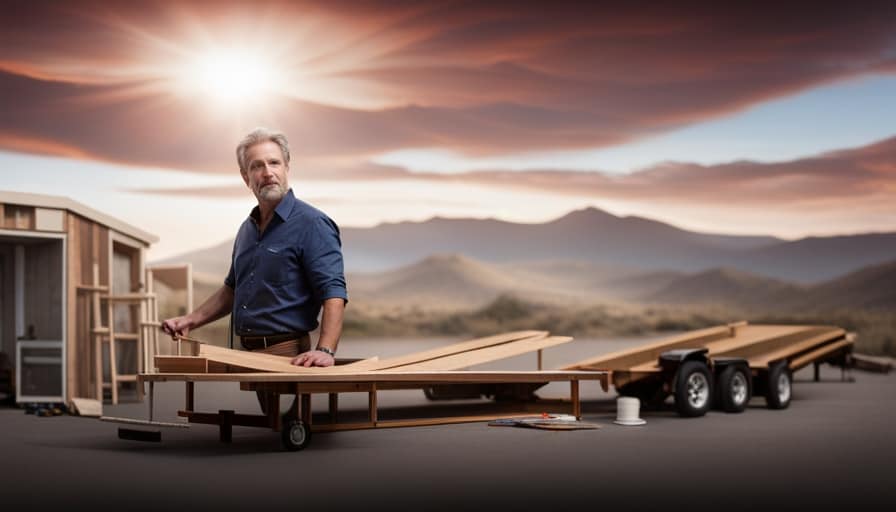
With limited square footage, every inch counts, and this forces us to be intentional about what we keep and how we arrange it.
Having less stuff means less to clean and fewer places for dust and dirt to hide.
Plus, with a smaller living space, it becomes easier to establish a cleaning routine and maintain a tidy and organized home.
Efficient Use of Space
Because of the efficient use of space in a tiny house, our cleaning and organizing tasks are simplified. Here are four ways in which this is achieved:
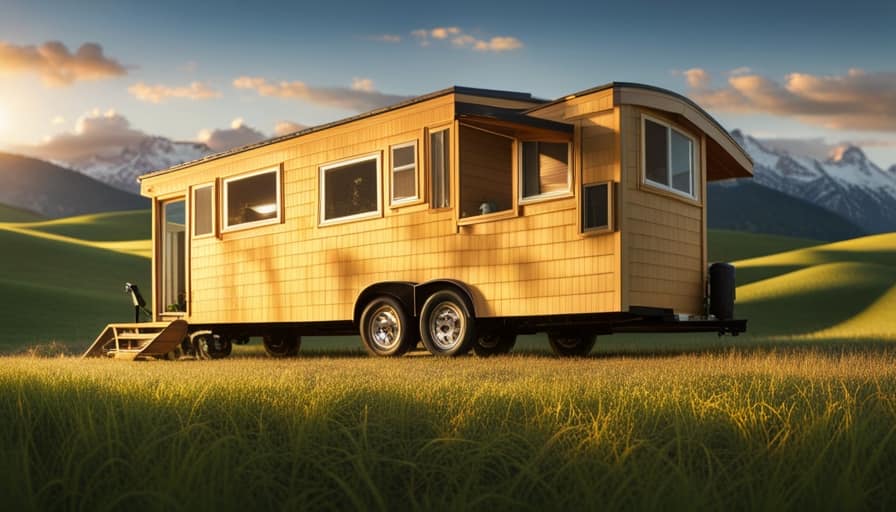
-
Multi-functional furniture: In a tiny house, every piece of furniture serves multiple purposes, such as a sofa that can be converted into a bed or a coffee table with built-in storage. This minimizes the need for excess furniture and creates more space.
-
Creative storage solutions: Tiny houses utilize every nook and cranny for storage. From under-stair cabinets to wall-mounted shelves, there are endless space-saving techniques to keep our belongings organized and easily accessible.
-
Minimalist lifestyle: Living in a tiny house encourages us to adopt a minimalist approach. With limited space, we’re forced to declutter and keep only what we truly need, resulting in less time spent cleaning and organizing.
-
Smart design features: Tiny houses are designed with efficiency in mind. From retractable tables to foldable chairs, these innovative features maximize space utilization and make cleaning and organizing a breeze.
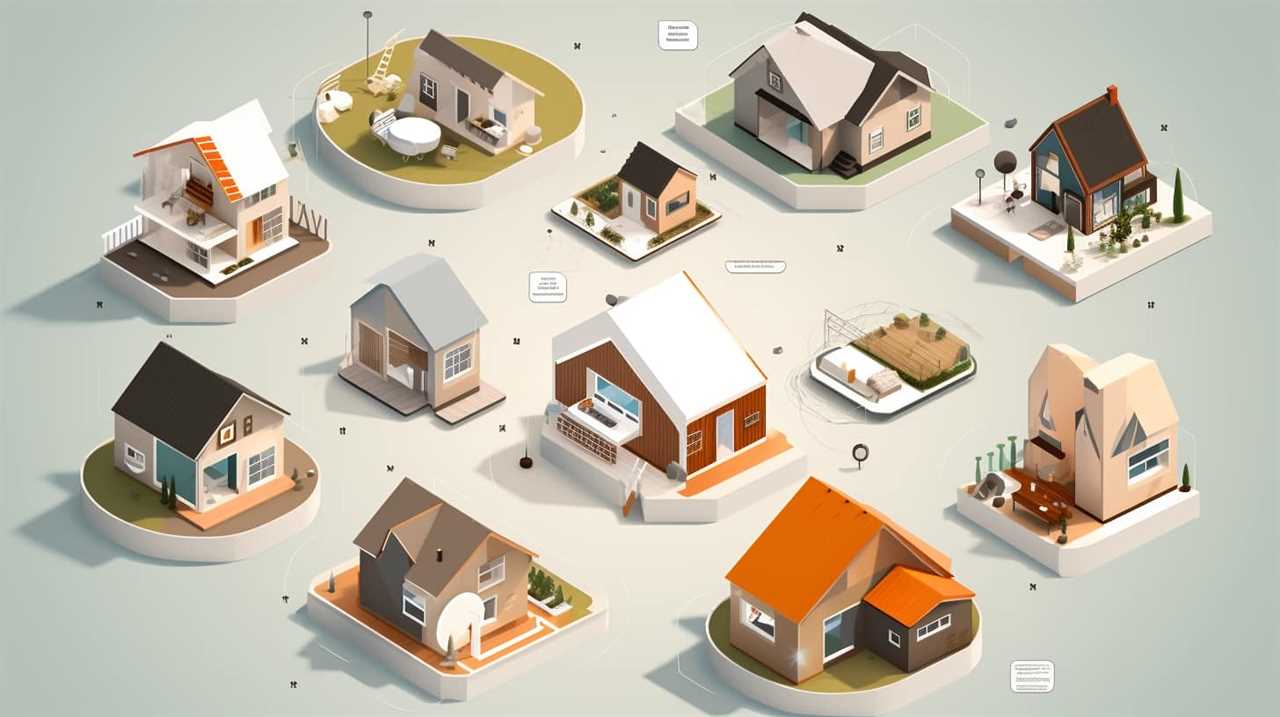
With efficient organization and space-saving techniques, our tiny house ensures that we spend less time on cleaning and organizing, allowing us to focus on the things that truly matter.
Transitioning into the next section, let’s explore the benefits of minimal clutter and mess in a tiny house.
Minimal Clutter and Mess
By having minimal clutter and mess, we can simplify our cleaning and organizing tasks in a tiny house. The minimalist design and spatial efficiency of a tiny house allow us to maximize every inch of space and keep our belongings to a minimum. This not only creates a visually pleasing environment but also makes it easier to clean and organize our tiny living space.
In a tiny house, every item has its place, and there is no room for unnecessary clutter. We can utilize clever storage solutions, such as built-in cabinets and multi-functional furniture, to keep our belongings organized and out of sight. This reduces the time and effort required for cleaning and eliminates the need for constant decluttering.
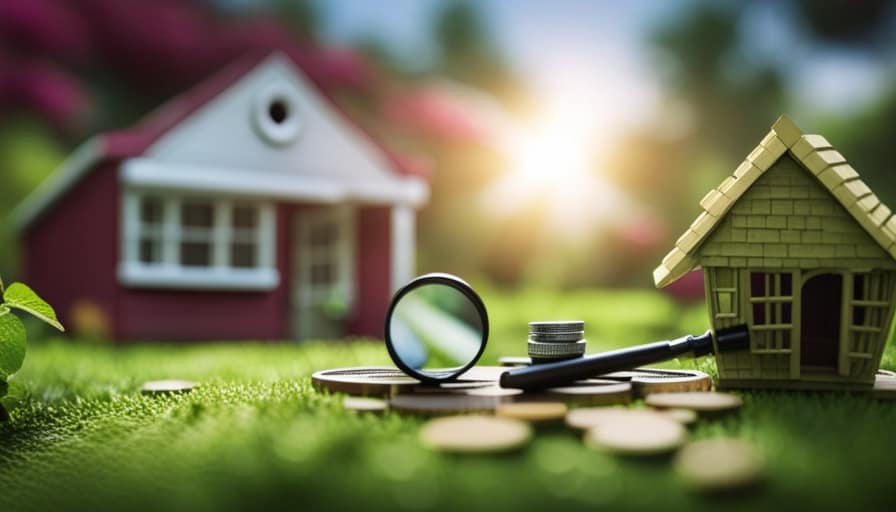
Here’s a simple comparison of cleaning and organizing tasks in a traditional house versus a tiny house:
| Traditional House | Tiny House |
|---|---|
| More rooms to clean and organize | Fewer rooms to clean and organize |
| More furniture and decor to dust | Less furniture and decor to dust |
| Larger surface areas to clean | Smaller surface areas to clean |
| More storage spaces to declutter | Less storage spaces to declutter |
As you can see, living in a tiny house with minimal clutter and mess simplifies our cleaning and organizing tasks, allowing us to spend less time on chores and more time enjoying our compact and efficient living space.
Easy to Maintain
We find it incredibly easy to maintain our tiny house, thanks to simplified cleaning and organizing. Living in a small space has allowed us to adopt a more minimalist lifestyle, which has numerous benefits when it comes to keeping our home clean and tidy.
Here are four reasons why maintaining a tiny house is a breeze:

-
Less square footage means less space to clean. With fewer rooms and less clutter, cleaning takes significantly less time and effort.
-
Simplified storage solutions help keep things organized. By utilizing clever storage hacks and maximizing vertical space, we can easily find and put away our belongings.
-
One person living means less mess. With fewer people in the house, there’s less opportunity for messes and clutter to accumulate.
-
A simplified lifestyle promotes cleanliness. By living with only the essentials, we’re more mindful of what we bring into our home, resulting in a cleaner and more organized living space.
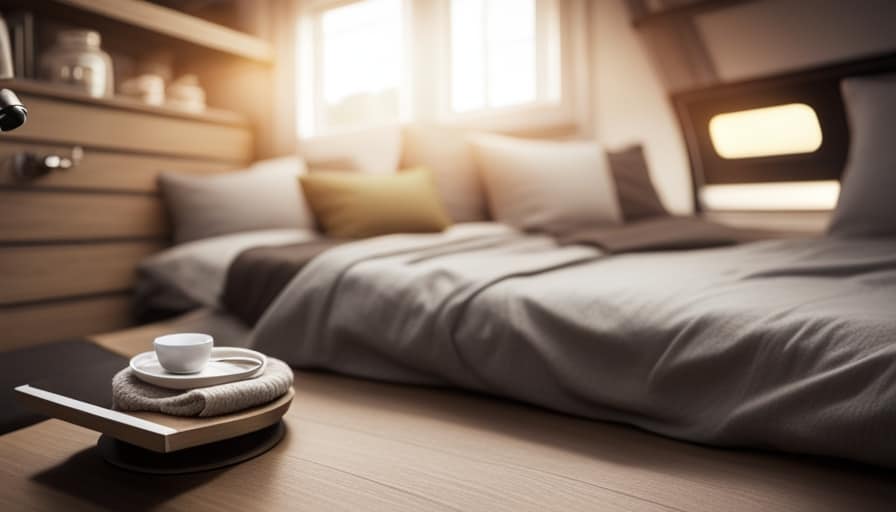
With our easy-to-maintain tiny house, we’ve more time and energy to focus on fostering a sense of community.
Foster a Sense of Community
Living in a tiny house allows us to connect with our neighbors and build meaningful relationships within a close-knit community. One of the key benefits of living in a tiny house is the sense of community it fosters.
With limited space, tiny house dwellers often find themselves spending more time outside, engaging with their neighbors and surrounding environment. This connection with nature creates opportunities for shared experiences and activities, such as community gardens, outdoor gatherings, and neighborhood clean-ups.
In a society that often values individualism, living in a tiny house encourages us to come together, support one another, and create a sense of belonging. By fostering a strong sense of community, tiny house living not only enriches our lives but also allows us to serve and uplift others in our close-knit neighborhoods.
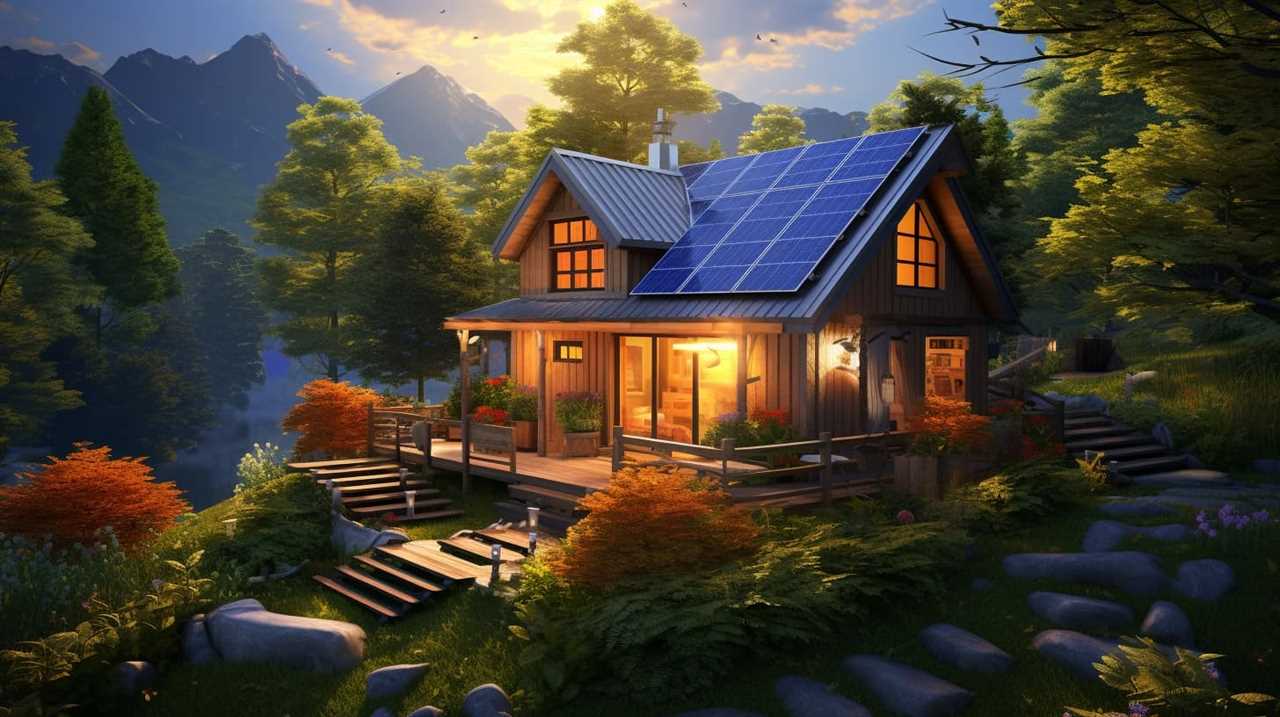
Frequently Asked Questions
Are Tiny Houses a Good Investment?
Tiny houses can be a good investment due to their financial implications and market demand. They offer affordability, lower utility costs, and potential for rental income. With the right location and design, they can provide a profitable return on investment.
Can Tiny Houses Be Customized and Personalized?
Yes, tiny houses can be fully customized and personalized to fit our unique needs and preferences. From layout and design to storage solutions and decor, the options for customization in a tiny house are endless.
How Do Tiny Houses Impact Property Taxes?
Tiny houses can reduce environmental impact by using fewer resources. They may also affect local zoning laws, which could lead to lower property taxes. It’s important to research local regulations before purchasing a tiny house.
Are Tiny Houses Eligible for Financing or Mortgages?
Tiny houses offer various financing options and may be eligible for mortgages. We understand the importance of finding affordable housing solutions, and we are here to guide you through the process of securing financing for your dream tiny home.

Can I Live in a Tiny House With a Family or Pets?
Living in a tiny house with a family or pets can present challenges, but there are solutions. By creating a functional and pet-friendly space, we can ensure everyone’s needs are met and enjoy the benefits of tiny house living.
Conclusion
Living in a tiny house is like stepping into a world where freedom and nature embrace you like old friends. It’s a chance to break free from the chains of financial stress and embrace a simpler, more sustainable lifestyle.
With efficient use of space and creative design, you can create a cozy haven that brings you closer to nature and fosters a sense of community.
So why not take the leap and experience the joy of living big in a tiny house?
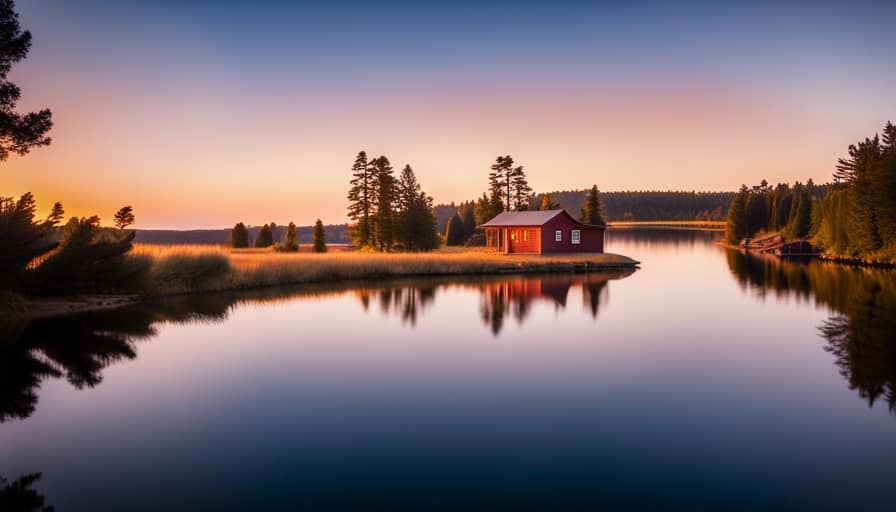
I’m Theodore, and I love tiny houses. In fact, I’m the author of Tiny House 43, a book about tiny houses that are also tree houses. I think they’re magical places where imaginations can run wild and adventures are just waiting to happen.
While tree houses are often associated with childhood, they can be the perfect adult retreat. They offer a cozy space to relax and unwind, surrounded by nature. And since they’re typically built on stilts or raised platforms, they offer stunning views that traditional homes simply can’t match.
If you’re looking for a unique and romantic getaway, a tree house tiny house might just be the perfect option.
